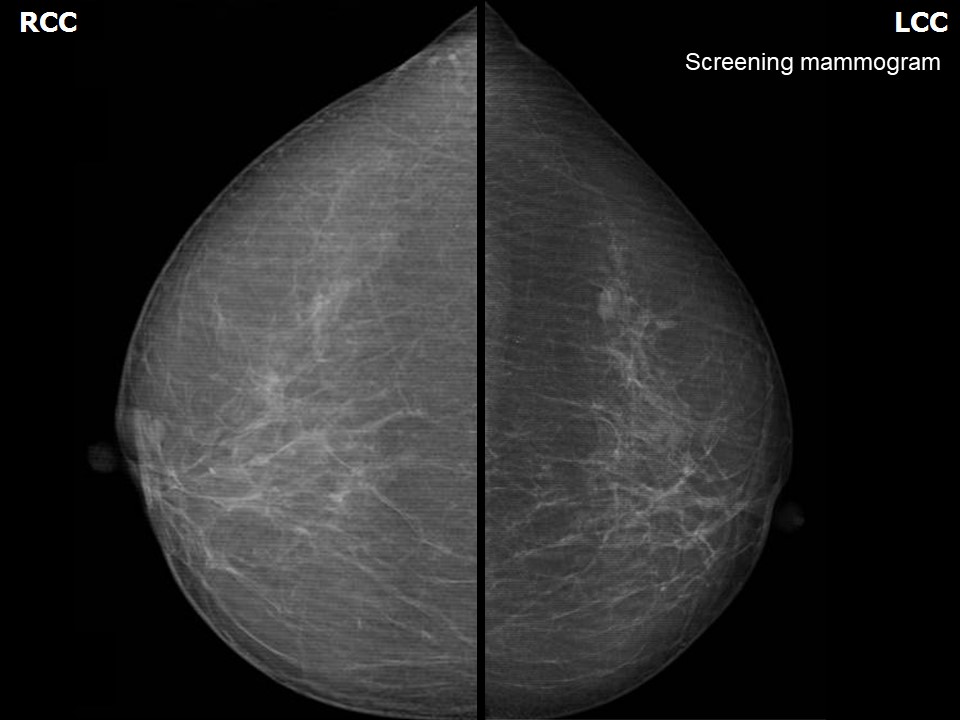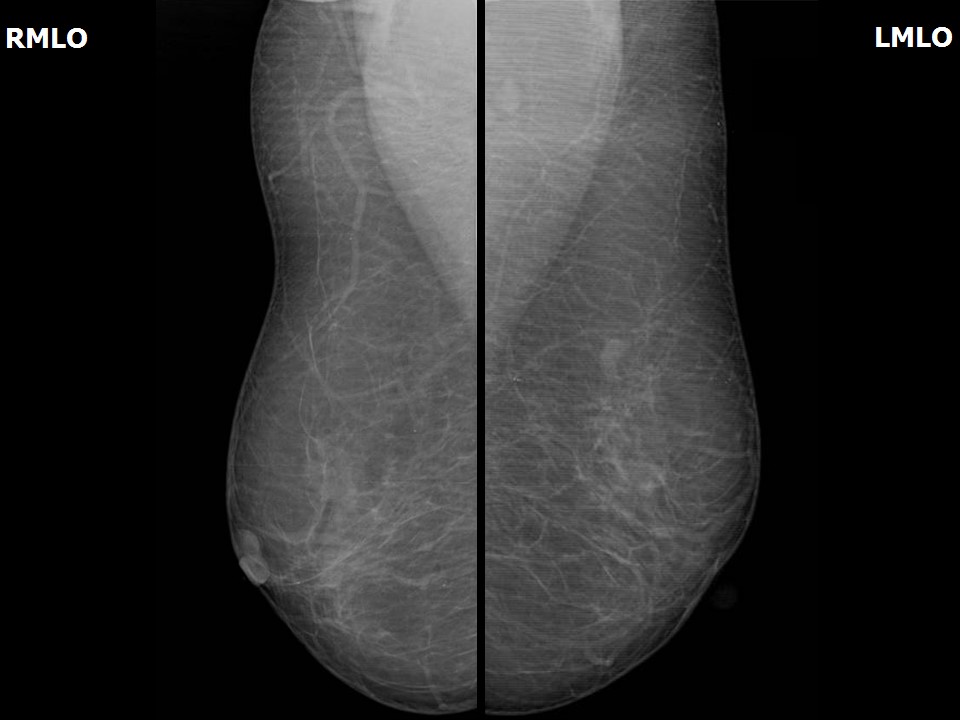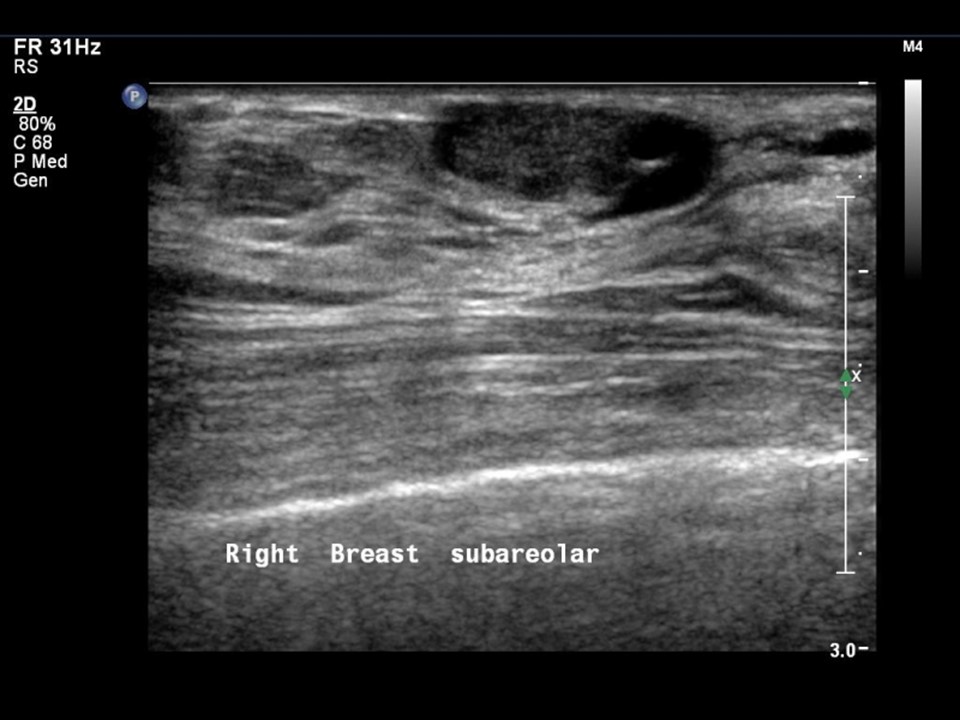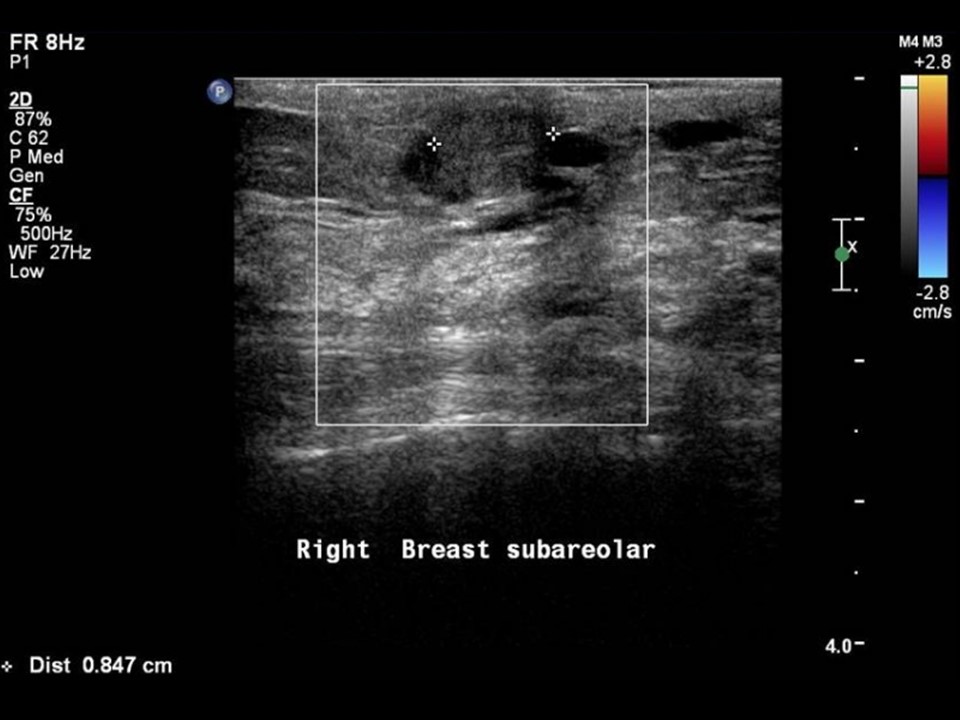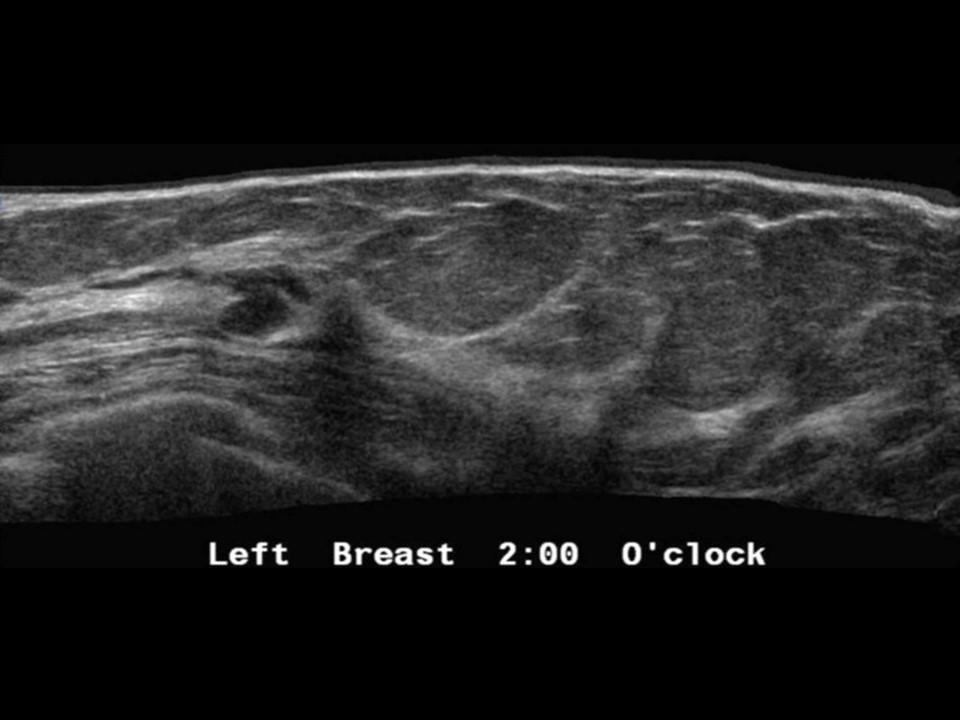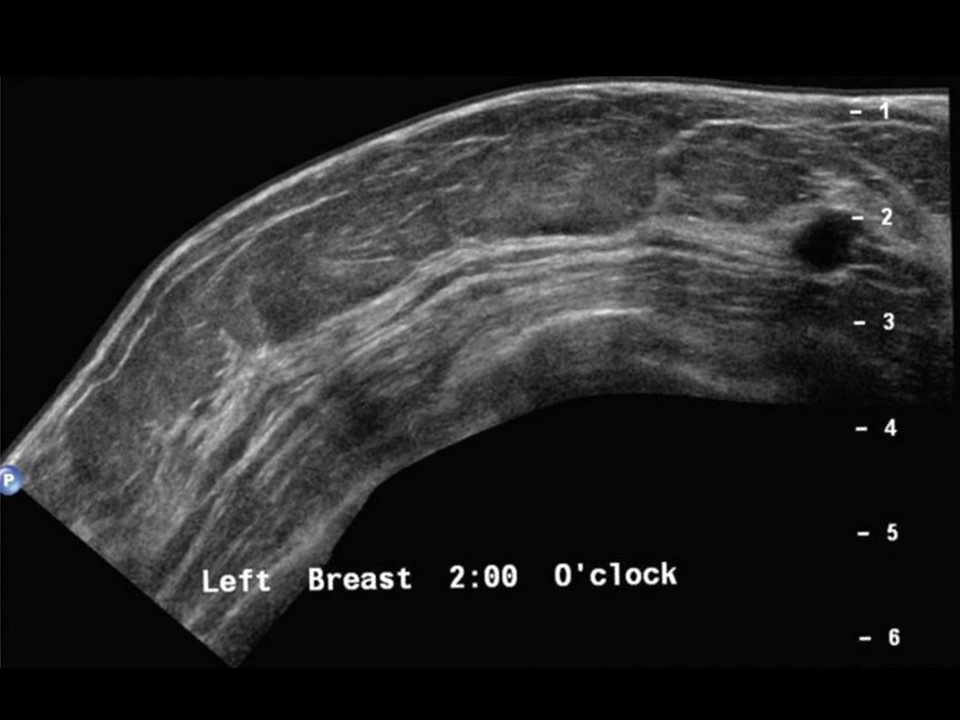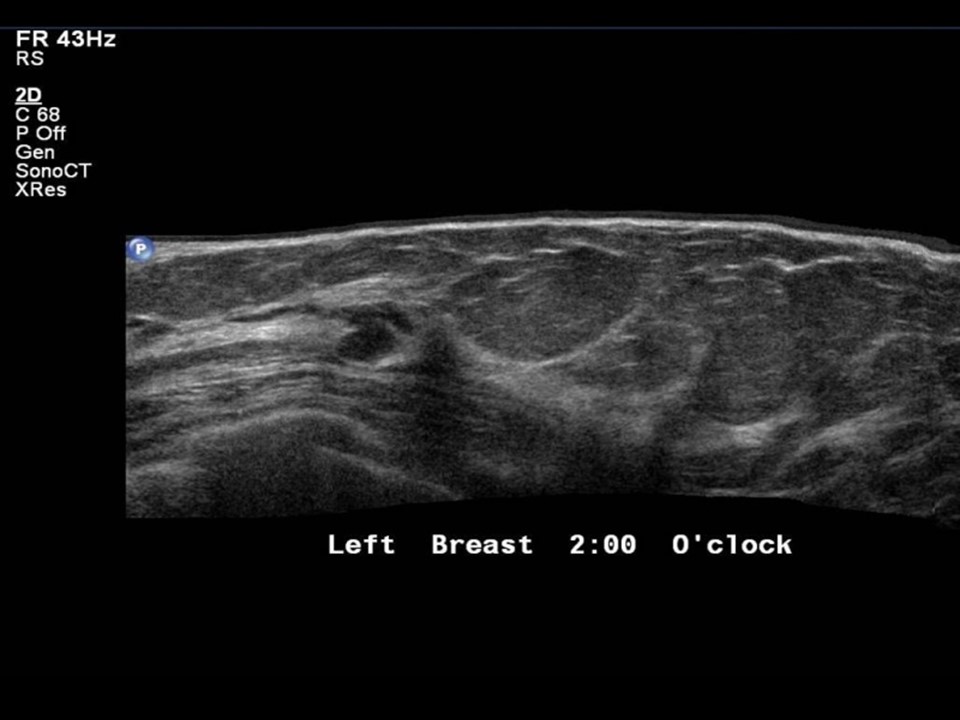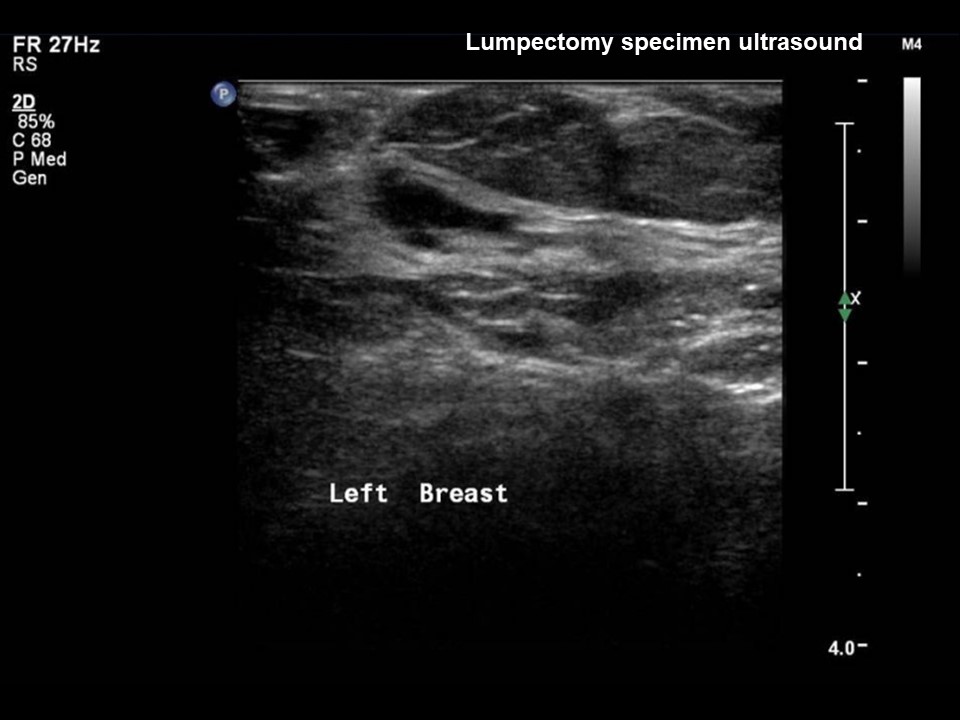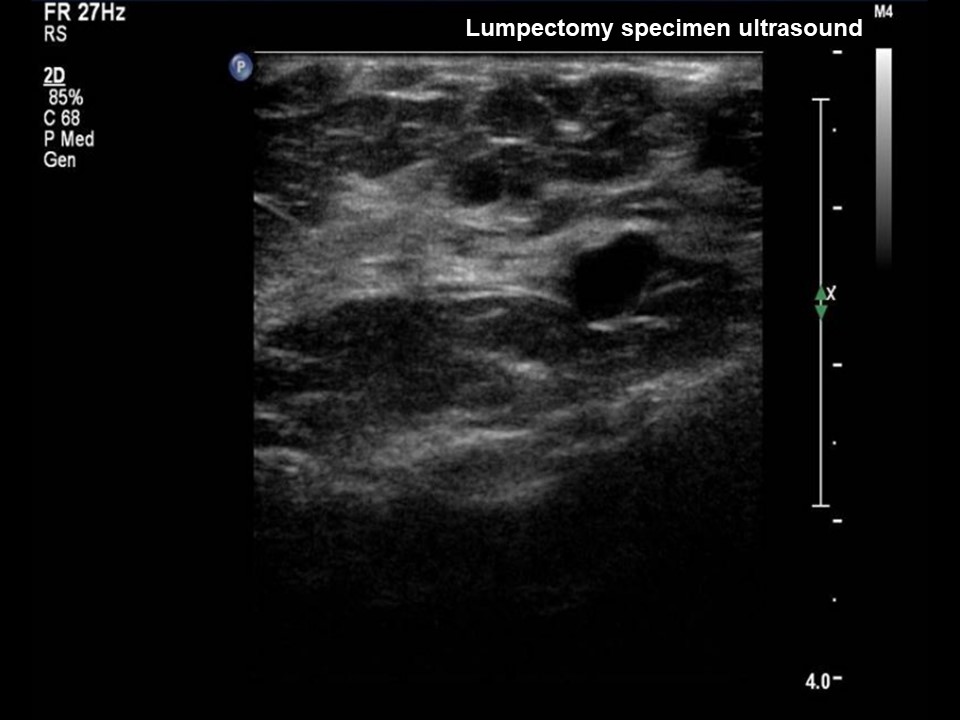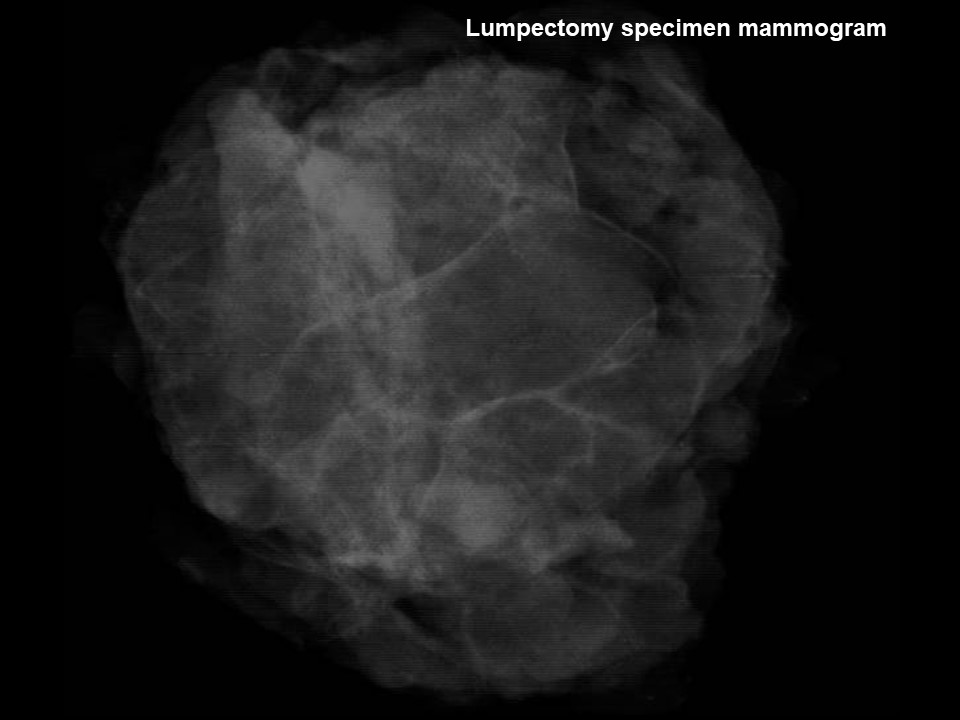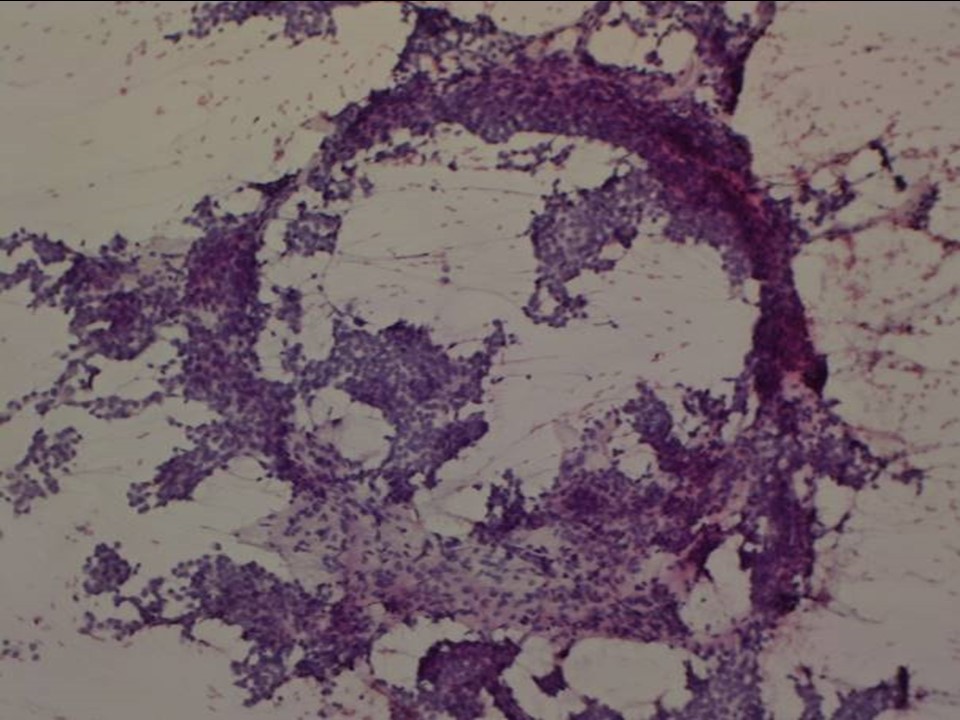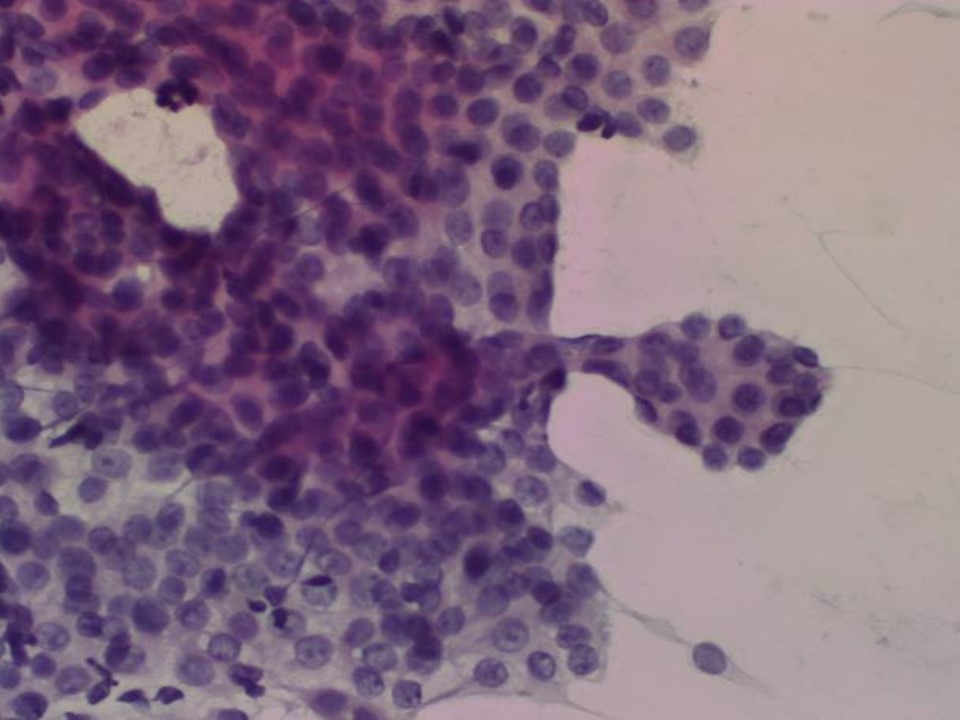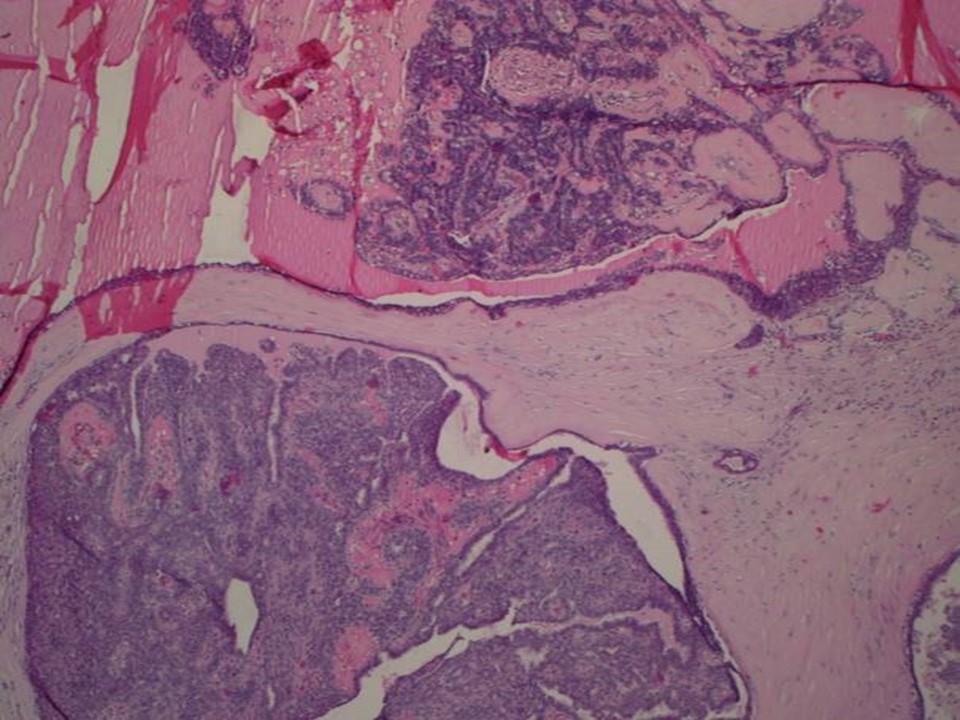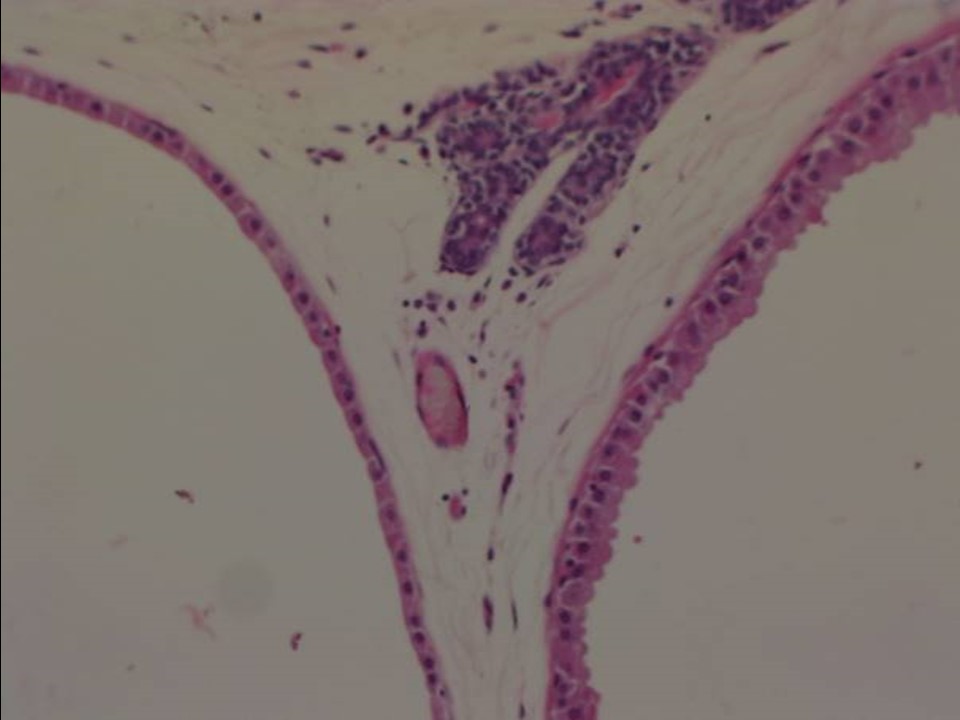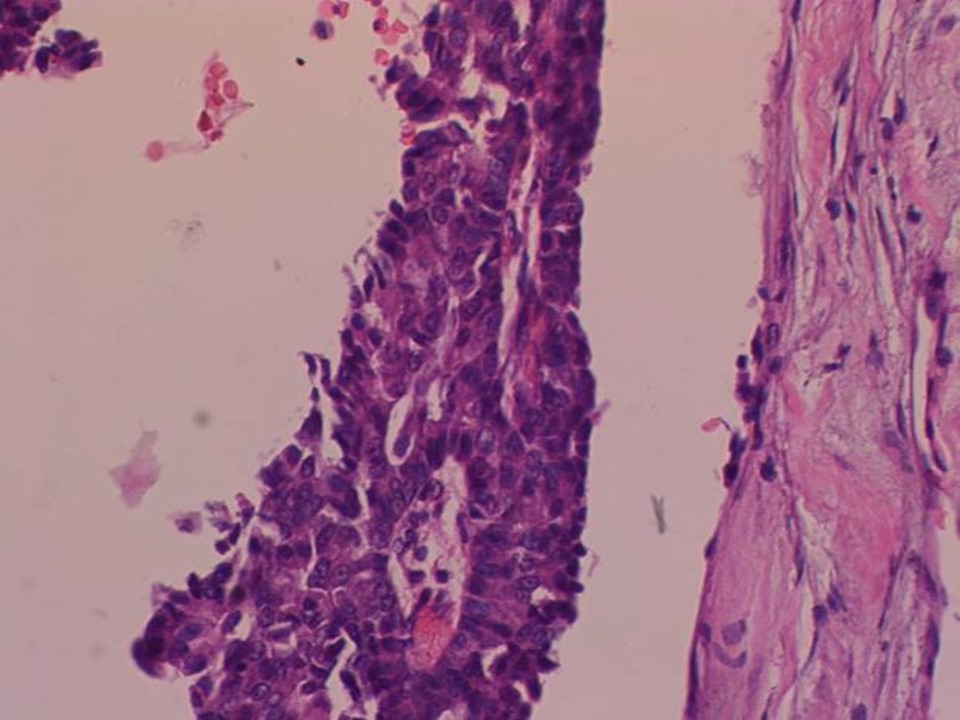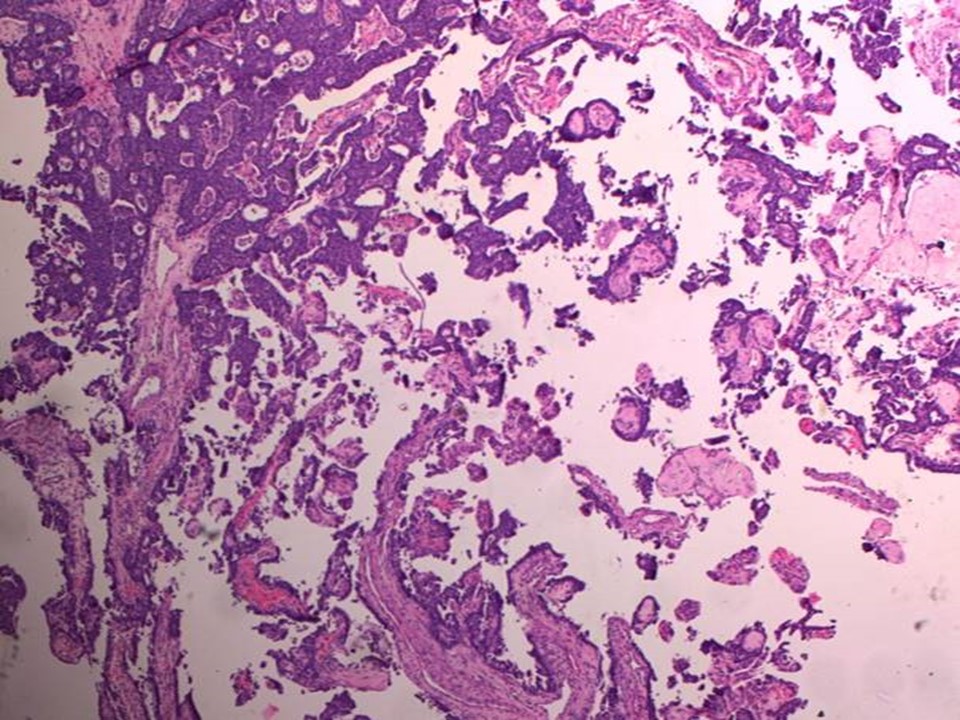Home / Training / Manuals / Atlas of breast cancer early detection / Cases
Atlas of breast cancer early detection
Filter by language: English / Русский
Go back to the list of case studies
.png) Click on the pictures to magnify and display the legends
Click on the pictures to magnify and display the legends
| Case number: | 107 |
| Age: | 51 |
| Clinical presentation: | Postmenopausal woman with increased risk of developing breast cancer presented for screening. Examination revealed a lumpish feel in the left breast and a swelling < 1 cm in the right retroareolar region. |
Mammography:
| Breast composition: | ACR category b (there are scattered areas of fibroglandular density) | Mammography features: |
| ‣ Location of the lesion: | Right breast, central portion of the breast, central zone, anterior third |
| ‣ Mass: | |
| • Number: | 1 |
| • Size: | 8.5 mm |
| • Shape: | Oval |
| • Margins: | Circumscribed |
| • Density: | Equal |
| ‣ Calcifications: | |
| • Typically benign: | None |
| • Suspicious: | None |
| • Distribution: | None |
| ‣ Architectural distortion: | None |
| ‣ Asymmetry: | None |
| ‣ Intramammary node: | None |
| ‣ Skin lesion: | None |
| ‣ Solitary dilated duct: | None |
| ‣ Associated features: | None |
| Breast composition: | ACR category b (there are scattered areas of fibroglandular density) | Mammography features: |
| ‣ Location of the lesion: | Left breast, upper outer quadrant at 2 o’clock, middle third |
| ‣ Mass: | |
| • Number: | 2 |
| • Size: | 1.1 cm and 0.7 cm |
| • Shape: | Irregular |
| • Margins: | Indistinct |
| • Density: | Equal |
| ‣ Calcifications: | |
| • Typically benign: | None |
| • Suspicious: | None |
| • Distribution: | None |
| ‣ Architectural distortion: | None |
| ‣ Asymmetry: | None |
| ‣ Intramammary node: | None |
| ‣ Skin lesion: | None |
| ‣ Solitary dilated duct: | None |
| ‣ Associated features: | None |
Ultrasound:
| Ultrasound features: Right breast, central portion of the breast | |
| ‣ Mass | |
| • Location: | Right breast, central portion of the breast |
| • Number: | 1 |
| • Size: | 8.5 mm |
| • Shape: | Oval |
| • Orientation: | Parallel |
| • Margins: | Indistinct |
| • Echo pattern: | Complex cystic and solid |
| • Posterior features: | No posterior features |
| ‣ Calcifications: | None |
| ‣ Associated features: | Adjacent dilated duct |
| ‣ Special cases: | None |
| Ultrasound features: Left breast, upper outer quadrant at 2 o'clock | |
| ‣ Mass | |
| • Location: | Left breast, upper outer quadrant at 2 o'clock |
| • Number: | 2 |
| • Size: | 0.9 cm and 0.7 cm |
| • Shape: | Irregular |
| • Orientation: | Not parallel |
| • Margins: | Indistinct |
| • Echo pattern: | Hypoechoic |
| • Posterior features: | No posterior features |
| ‣ Calcifications: | None |
| ‣ Associated features: | Adjacent duct prominence in the larger lesion |
| ‣ Special cases: | None |
| Ultrasound features: Left breast lumpectomy | |
| ‣ Mass | |
| • Location: | Left breast lumpectomy |
| • Number: | 2 |
| • Size: | 0.9 cm and 0.7 cm |
| • Shape: | Irregular |
| • Orientation: | Not parallel |
| • Margins: | Indistinct |
| • Echo pattern: | Hypoechoic |
| • Posterior features: | No posterior features |
| ‣ Calcifications: | None |
| ‣ Associated features: | None |
| ‣ Special cases: | None |
BI-RADS:
BI-RADS Category (bilateral): 4C (high suspicion for malignancy)Further assessment:
Further assessment advised: Referral for cytologyCytology:
| Cytology features: | |
| ‣ Type of sample: | FNAC |
| ‣ Site of biopsy: | |
| • Laterality: | Right |
| • Quadrant: | Subareolar |
| • Localization technique: | |
| • Nature of aspirate: | |
| ‣ Cytological description: | Highly cellular smears reveal ductal epithelial cells in sheets and papillae with strands of fibrous stroma. Myoepithelial cells are also noted. Focal areas of mild nuclear atypia noted. Background shows a few dispersed epithelial cells and RBCs |
| ‣ Reporting category: | Atypical, probably benign |
| ‣ Diagnosis: | Subareolar lump, papillary lesion of breast with mild nuclear atypia. Biopsy for accurate typing of papillomatous lesion advised |
| ‣ Comments: |
Histopathology:
Left breast, lumpectomy specimen
| Histopathology features: | |
| ‣ Specimen type: | Left breast, lumpectomy specimen |
| ‣ Laterality: | |
| ‣ Macroscopy: | Left breast lumpectomy specimen (6.5 × 5.5 × 4.0 cm) oriented with long suture laterally, short suture superiorly, and black suture at the base. Skin flap (5.0 × 1.5 cm). On serial sectioning, a greyish area (4.5 × 1.5 × 1.0 cm) is identified |
| ‣ Histological type: | Sections from the left breast lumpectomy specimen reveal histology of intracystic ductal papilloma with mild atypia. The surrounding breast parenchyma shows fibrosis, cystic changes, and apocrine metaplasia in ducts focally |
| ‣ Histological grade: | |
| ‣ Mitosis: | |
| ‣ Maximum invasive tumour size: | |
| ‣ Lymph node status: | |
| ‣ Peritumoural lymphovascular invasion: | |
| ‣ DCIS/EIC: | |
| ‣ Margins: | |
| ‣ Pathological stage: | |
| ‣ Biomarkers: | |
| ‣ Comments: |
Right breast, excision specimen
| Histopathology features: | |
| ‣ Specimen type: | Right breast, excision specimen |
| ‣ Laterality: | |
| ‣ Macroscopy: | Right breast excision specimen received as single bit (2.0 × 1.2 × 1.0 cm). Cut section reveals a firm whitish area (1.0 × 0.6 cm), well circumscribed. This specimen is not oriented for margins |
| ‣ Histological type: | Section from the right breast specimen revealed histology of minimally invasive intracystic papillary carcinoma with focal solid area. A single focus of invasion consisting of small clusters of cells is seen with surrounding reactive desmoplasia. The maximum dimension of this invasive area is 0.1 cm. One margin is very close to a single focus of invasive tumour cells. The remaining margins are close but technically free of invasive and intracystic papillary carcinoma |
| ‣ Histological grade: | |
| ‣ Mitosis: | |
| ‣ Maximum invasive tumour size: | |
| ‣ Lymph node status: | |
| ‣ Peritumoural lymphovascular invasion: | |
| ‣ DCIS/EIC: | |
| ‣ Margins: | |
| ‣ Pathological stage: | |
| ‣ Biomarkers: | |
| ‣ Comments: |
Case summary:
| Postmenopausal woman with increased risk of developing breast cancer presented for screening. Examination revealed a lumpish feel in the left breast and a swelling < 1 cm in the right retroareolar region. Mammography and breast ultrasound showed a right breast subareolar dilated duct with an intraductal solid lesion < 1 cm, which are features suspicious for intraductal papilloma BI-RADS 4B on imaging. In the left breast upper outer quadrant, two small lesions were seen with indistinct margins, which are features suspicious for neoplastic mass, BI-RADS 4C on imaging. On cytology, the right breast subareolar lump was diagnosed as papillary lesion of breast with mild nuclear atypia. Histopathology showed an encapsulated papillary carcinoma with minimally invasive area of infiltrating carcinoma in the right breast and intracystic ductal papilloma with mild atypia in the left breast. |
Learning points:
|




